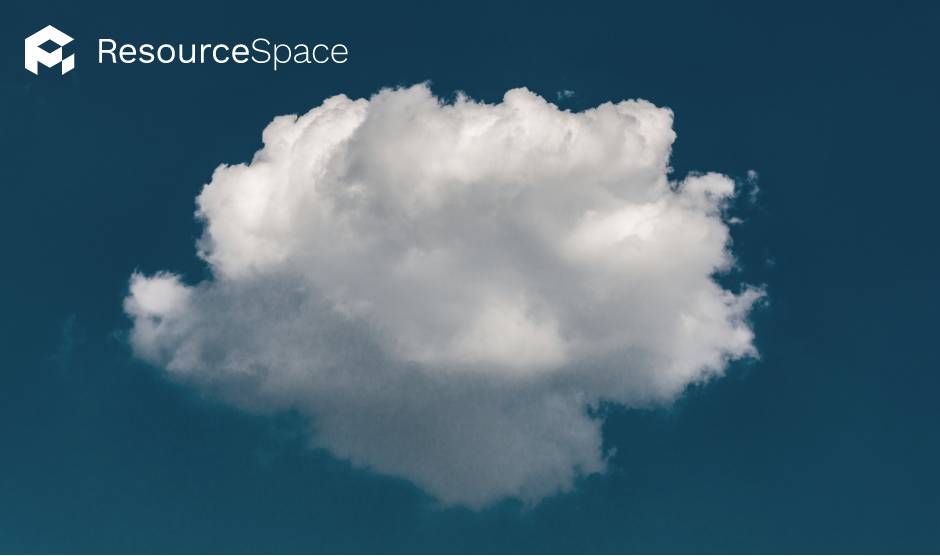
Fairtrade communications staff around the world really appreciate ResourceSpace. It's proven invaluable as a one-stop for sharing and storing all our images and brand assets. I don't know how we'd manage without it!
Blog
16th September 2021

Cloud versus on-premise Digital Asset Management has always been a hot topic. With many organisations implementing remote or hybrid working in the wake of the coronavirus pandemic, it's an issue that's even more important.
A massive 87% of office workers now want to work from home at least one day a week and over half (55%) of all organisations are planning to make changes to accommodate this and become more efficient in the process.
Let's start with the basics. What does 'on-premise' and 'cloud', in the context of Digital Asset Management, actually mean?
Your organisation is responsible for the hosting, backups, storage and security elements of the DAM system.
You may have to pay a flat fee to the vendor for the software - or a monthly fee for ongoing customer support - but the servers it's hosted on are your responsibility.
ResourceSpace is free and open source. This means if you want to install and run our solution on your own servers - that's fine with us.
The term 'cloud' has been around for a while now, but there's still uncertainty about what it actually means.
DAM systems hosted 'in the cloud' are still installed onto physical servers - they might even be closer to your offices than servers you own - you just aren't responsible for their maintenance. Cloud hosting requires a monthly fee for the 'space' your digital assets require as well as the backups and security processes in place to keep your information safe.
Take a look at how cloud and on-premise DAM systems compare when looking at eight of the most important Digital Asset Management considerations.
| Feature/issue | Cloud | On-premise |
|---|---|---|
| Upfront costs | With no need for physical hardware, cloud DAM has very little upfront cost. You'll only pay for the storage space you need and won't have to invest in any in-house expertise. With ResourceSpace there's no upfront cost for the software, with 10GB of free cloud storage for all customers. Simply pay for technical and customer support if you need it. |
On-premise DAM requires a high upfront cost because you have to invest in the physical hardware and technical expertise before implementing the software. It's also likely you'll also be paying for more space than you need initially. |
| Getting up and running | When you invest in cloud DAM there's very little technical set up required. You can often get up and running with your system the same day as you purchase it (although there may be a need for training and support from the vendor). In fact, you can access your free ResourceSpace instance within minutes of signing up. Give it a go. |
DAM vendors already have the necessary infrastructure in place to get your system up and running in the cloud. By contrast, on-premise DAM systems have a much longer deployment time unless you have significant in-house technical skills. Even then the server needs to be configured, while you also need to install the software itself and all the necessary programmes. |
| Ongoing Costs | Although cloud hosting comes with lower upfront costs, we'd recommend that you pay for ongoing technical and customer support to ensure you get the most out of your DAM. You also pay every month for 'renting' the vendor's server space. |
The long term costs of on-premise Digital Asset Management isn't the same as with cloud, but there are still ongoing costs. For example, although you don't have to pay for your digital asset storage every month, you will have to maintain an in-house IT resource. This will be needed to action ongoing maintenance, server upgrades, backups, disaster recovery procedures and more. You'll also have the added utility costs of powering and cooling your servers. |
| Scalability | Cloud hosted DAM systems grow with you, easily scaling up based on your needs. What's more, additional storage space can be added quickly, unlike an on-premise solution where you'd have to purchase more hardware. |
When hosting your digital assets on-premise, scaling up means buying hardware. This is a slower process compared to simply increasing cloud storage, while the one-off cost of buying a new server is also higher. For this reason, you'll have to constantly be running more server space than you need to ensure you can grow into it. |
| Compliance and security | If your organisation needs to adhere to strict legal compliance standards, cloud hosting might not be the best solution. This is because you don't have total control over where your data is stored. That aside, there's a common misconception that on-premise is more secure than cloud. Unless your organisation has in-house security experts this probably isn't the case. Cloud hosting providers hold millions of data points for hundreds of thousands of users, and as a result will typically have better security in place than a single business hosting the software in-house. |
With on-premise DAM it is much easier to meet regulatory compliance because you control the auditability of your data. You know exactly where it's stored and who has access to it. |
| Software updates and maintenance | All software and hardware updates are taken care of, while you'll benefit from improvements made to the DAM system as soon as they're rolled out. However, because cloud solutions are accessed via the internet, if this drops you'll lose access to your DAM. Any problems with the vendor's servers will also impact your business. |
You won't benefit from automatic updates rolled out by the DAM vendor. One advantage is that you can choose whether or not to implement a particular update, but the vendor may not support anything other than the latest version. You also have complete control over the servers your data is stored on, but this is a double-edged sword. You have to maintain and update them which requires an investment of time and money. |
| Remote access | A cloud DAM system is designed to be accessed from any location and via multiple devices. You can even easily grant access to external stakeholders. This is particularly important now so many organisations are adopting remote and hybrid working practices. All your employees need is an internet connection and compatible device. |
Although on-premise DAM systems can be accessed remotely, it's not always as straightforward as with cloud, particularly when outside of business hours when your internal IT team isn't available. Unrecognised devices and locations may have to be verified manually, making it hard to access digital assets for remote teams. |
| Vendor lock-in | Some DAM providers use proprietary technologies that are hard to migrate if you ever wanted to leave that vendor. They may not even allow it. This isn't ideal for something as essential as your Digital Asset Management. ResourceSpace is open source with no vendor lock-in, which means you can end your relationship with us while retaining use of the software. There's no need for an expensive and complex migration project. |
With on-premise DAM software you have total ownership. There's no consequence to ending a relationship with a vendor and, as long as it's technically possible, you can migrate your digital assets to a new system with the right internal resource. |
| Performance | Cloud-hosted DAM vendors boast powerful servers that make accessing your system very fast. This makes sure your employees can work efficiently all the time. | You'll have to pay more for the fastest servers, and it's likely your organisation won't have servers as powerful as a cloud service provider. |
For most use cases cloud hosting is usually the best option. You don't have to worry about technical maintenance, long deployment times or scalability.
If you need to store data that cannot leave a specific legal jurisdiction, or you're working with huge volumes of uncompressed video content, on-premise might be your only option, but in every other circumstance cloud-hosted DAM is by far the best option for organisations of all sizes.
Get in touch with one of our experts today and we'll help you to identify whether you really do require an on-premise solution, or whether our cloud-hosted Digital Asset Management software will serve you best. Alternatively, launch your 100% free ResourceSpace instance today.
#RemoteWork
#HybridWork
#OnPremiseDAM
#IndustryNews
#BestPractice
#ResourceSpaceTips
#WorkFromHome
#Efficiency
#DataSecurity
#DataStorage
#CostEfficiency